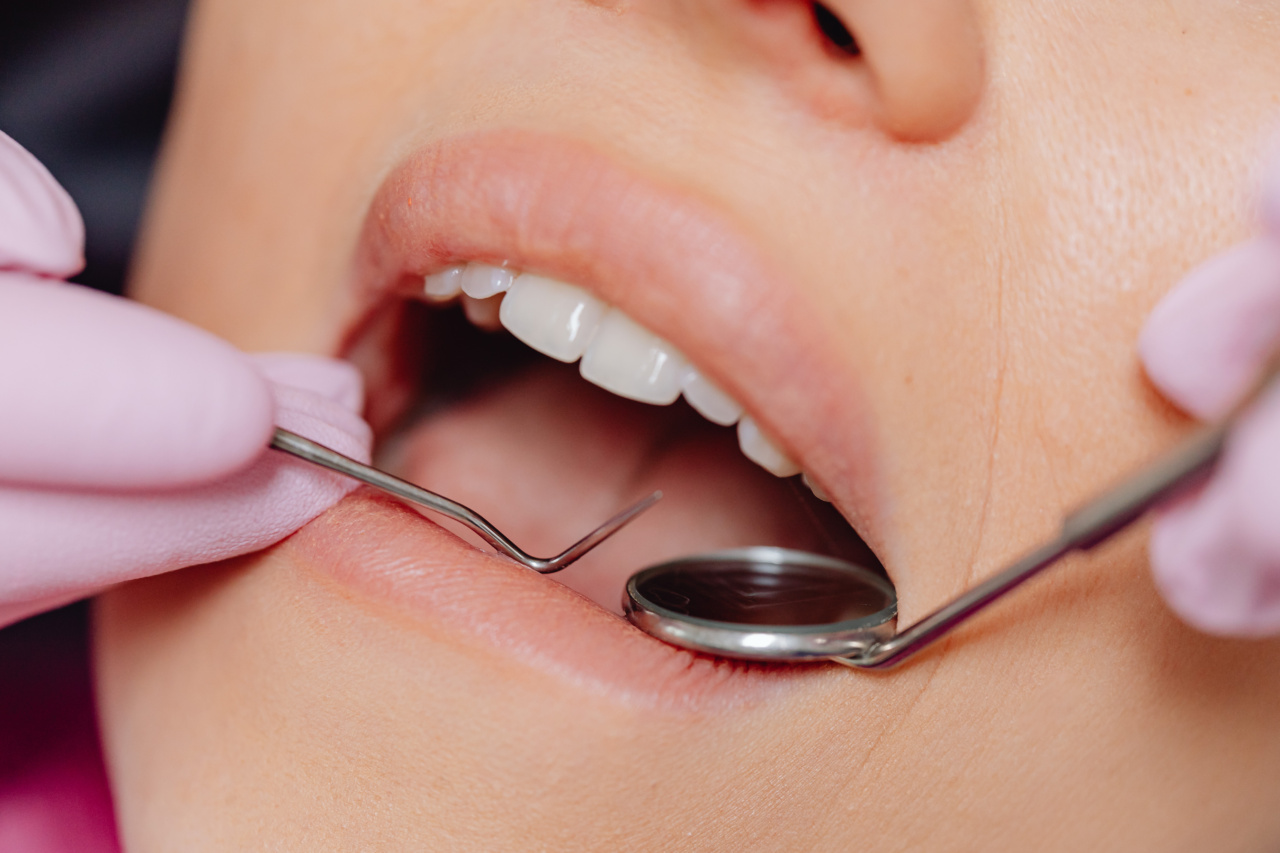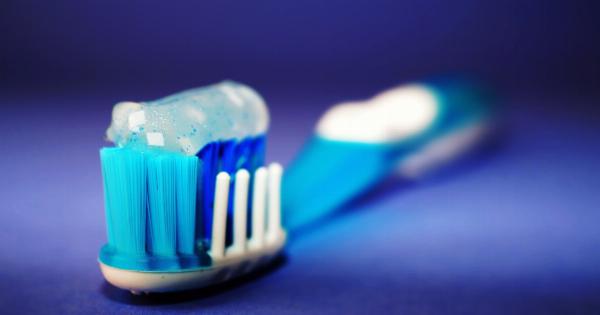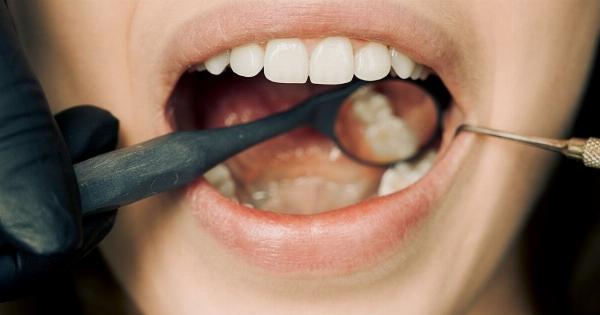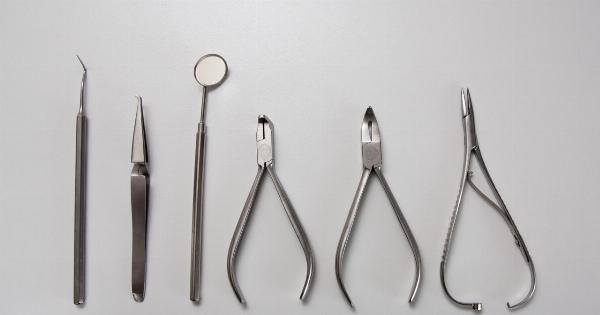Tooth sensitivity can be a frustrating and painful condition that affects millions of people worldwide.
It is characterized by a sharp or shooting pain in the teeth when exposed to certain stimuli such as hot or cold temperatures, sweet or acidic foods, or even when breathing in cold air. If you are one of the many individuals dealing with this discomfort, it is important to understand the causes and explore the available treatment options.
In this article, we will delve into the various factors that contribute to tooth sensitivity and provide insights on how to manage this condition effectively.
Causes of Tooth Sensitivity
1. Enamel Erosion:.
The enamel is the outermost layer of the tooth that protects the underlying dentin and nerves.
When the enamel wears down or erodes due to factors such as acidic foods and beverages, improper brushing techniques, or tooth grinding, the dentin becomes exposed, leading to sensitivity.
2. Gum Recession:.
Gums play a crucial role in protecting the tooth roots. However, certain factors like gum disease, aggressive brushing, or aging can cause the gums to recede, exposing the sensitive root surfaces.
This exposes the microscopic tubules that lead to the nerve endings, resulting in sensitivity.
3. Tooth Decay:.
Cavities or tooth decay can cause tooth sensitivity. When the decay progresses beyond the enamel and reaches the dentin, sensitivity can occur.
This happens due to the proximity of the dentin to the tooth nerve, making it highly sensitive to external stimuli.
4. Teeth Grinding:.
Bruxism, or teeth grinding, puts excessive pressure on the teeth, wearing down the enamel and exposing the dentin. Grinding commonly occurs during sleep and can be caused by stress, misaligned teeth, or certain medications.
The sensitivity associated with grinding may be more pronounced in individuals who clench their jaws tightly.
5. Dental Procedures:.
Some dental procedures, such as teeth whitening or extensive dental cleanings, may cause temporary tooth sensitivity.
This sensitivity typically subsides within a few days, and dentists often recommend desensitizing toothpaste or gels to alleviate discomfort during this period.
6. Cracked or Fractured Teeth:.
Cracks or fractures in the teeth can expose the dentin and cause sensitivity. These cracks may occur due to a dental injury, habits like chewing on hard objects, or natural wear and tear.
7. Acidic Foods and Beverages:.
Consuming a diet high in acidic foods and beverages, such as citrus fruits, soda, or vinegar-based dressings, can erode the enamel over time, leading to sensitivity.
Acidic foods and drinks can also irritate already sensitive teeth, exacerbating discomfort.
8. Dental Restorations:.
While dental restorations like fillings or crowns aim to repair damaged teeth, they may lead to temporary sensitivity. This sensitivity can arise due to the proximity of the restoration materials to the underlying dentin or nerve endings.
9. Oral Health Habits:.
Poor oral hygiene practices, such as infrequent brushing or inadequate flossing, can contribute to tooth sensitivity. Plaque buildup and gum disease can cause gum recession and enamel erosion, leading to sensitivity.
10. Age-related Factors:.
As we age, the enamel naturally becomes thinner and gums tend to recede, which can contribute to tooth sensitivity. Additionally, older individuals are more likely to have cracked or fractured teeth, further exacerbating the sensitivity.
Symptoms of Tooth Sensitivity
The most common symptom of tooth sensitivity is a sudden, sharp pain that shoots through the tooth when exposed to certain triggers. These triggers can include:.
– Hot or cold foods and beverages.
– Sweet or acidic foods.
– Cold air or wind.
– Brushing or flossing teeth.
– Biting down on hard foods.
Individuals with tooth sensitivity may also experience a dull, persistent ache in the affected tooth or teeth.
Treatment Options for Tooth Sensitivity
1. Desensitizing Toothpaste:.
Desensitizing toothpaste is a common treatment option for tooth sensitivity. It contains compounds that help block the transmission of pain signals from the tooth surface to the nerve.
Regular use of desensitizing toothpaste can gradually alleviate sensitivity.
2. Fluoride Treatment:.
Fluoride treatments, in the form of gels, varnishes, or rinses, can help strengthen the enamel and reduce sensitivity. Dentists may recommend professional fluoride treatments or over-the-counter fluoride products for home use.
3. Dental Bonding or Sealants:.
In cases where tooth sensitivity is caused by exposed dentin due to enamel erosion or gum recession, dental bonding or sealants may be used.
These procedures involve applying a protective resin material over the sensitive areas, providing a barrier against external triggers.
4. Prescription Strength Toothpaste:.
If over-the-counter desensitizing toothpaste does not provide sufficient relief, dentists may prescribe stronger toothpaste formulations that contain higher concentrations of desensitizing agents, such as potassium nitrate or stannous fluoride.
5. Gum Grafting:.
In severe cases of gum recession, where the exposed root surfaces contribute to sensitivity, dentists may recommend gum grafting.
This procedure involves taking tissue from another area of the mouth or using donor tissue to cover the exposed root surfaces, thus reducing sensitivity.
6. Dental Fillings or Crowns:.
If tooth sensitivity is caused by tooth decay, cracks, or fractures, dental fillings or crowns may be necessary to restore the tooth structure and alleviate sensitivity.
These restorations seal and protect the exposed dentin, preventing further irritation.
7. Dental Inlays or Onlays:.
In cases where tooth decay or damage is more extensive, dental inlays or onlays, also known as partial crowns, may be recommended.
These restorations provide a more conservative approach than full crowns, preserving more natural tooth structure while addressing sensitivity.
8. Root Canal Treatment:.
When sensitivity is severe and persistent, indicating damage or infection of the tooth pulp, root canal treatment may be necessary. This procedure involves removing the infected or damaged pulp, cleaning the root canals, and sealing them.
Root canal treatment eliminates sensitivity by removing the nerves responsible for transmitting pain signals.
9. Avoiding Triggering Factors:.
Avoiding triggers such as extremely hot or cold foods, sugary or acidic foods and drinks, and hard or crunchy foods can help reduce tooth sensitivity.
Taking preventive measures by using a straw to minimize contact of acidic beverages with teeth or wearing a mouthguard to prevent teeth grinding can also be beneficial.
10. Regular Dental Check-ups:.
Maintaining regular dental check-ups is crucial for identifying and addressing early signs of tooth sensitivity or its underlying causes.
Dentists can provide personalized recommendations for managing tooth sensitivity based on the individual’s oral health needs.
Conclusion
Tooth sensitivity can significantly impact an individual’s quality of life, making it essential to understand its causes and available treatment options.
Whether caused by enamel erosion, gum recession, tooth decay, or other factors, tooth sensitivity can be effectively managed through desensitizing toothpaste, fluoride treatments, dental bonding or sealants, and various restorative procedures. Seeking professional dental advice and practicing good oral hygiene habits are key to maintaining a healthy and pain-free smile.





























